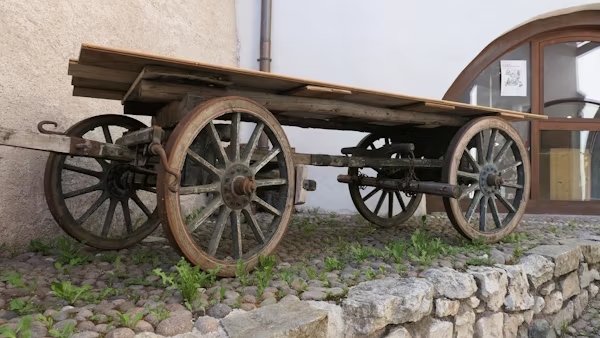Agriculture has always relied on tools that combine efficiency with necessity. Among these tools, the Afruimwagen—translated as clearing wagon or collection wagon—holds a distinct place. Though it may not enjoy the same global recognition as the tractor or plow, the Afruimwagen has played a crucial role in the mechanization of farming, particularly in European contexts where precision, sustainability, and productivity have long shaped agricultural life.
This article explores the evolution, technological development, and cultural significance of Afruimwagens, examining their journey from simple clearing carts to modern mechanized systems.
What is an Afruimwagen?
An Afruimwagen is a specialized agricultural wagon used to collect, transport, and clear crops or field residues. Depending on context, it can serve multiple purposes:
-
Gathering potatoes, sugar beets, or other root crops.
-
Collecting grass, silage, or straw.
-
Removing agricultural waste or leftover materials after harvesting.
Its versatility makes it essential for both small-scale traditional farms and large-scale industrial agriculture.
Historical Evolution of Afruimwagens
Early Beginnings
The earliest versions of Afruimwagens were simple wooden carts drawn by horses or oxen. Farmers used them primarily for hauling harvested crops or clearing fields of debris.
Industrial Revolution and Mechanization
During the late 19th and early 20th centuries, technological advances transformed farming equipment. Afruimwagens evolved from wooden frames to metal-based wagons, capable of carrying heavier loads with greater durability.
Post-War Agricultural Boom
After World War II, the Green Revolution encouraged mass production and efficiency. The Afruimwagen was increasingly paired with tractors, and mechanized conveyors began to replace manual loading.
Modern Innovations
Today’s Afruimwagens integrate hydraulics, conveyor belts, and digital sensors, making them indispensable in precision agriculture. These wagons are not merely transport devices—they are intelligent machines optimized for specific crops and environmental conditions.
Technological Advancements in Afruimwagens
1. Hydraulic Systems
Modern Afruimwagens are often equipped with hydraulics, enabling easier loading, tilting, and unloading of materials with minimal manual labor.
2. Conveyor Mechanisms
Conveyors allow for gentle handling of crops, reducing damage to sensitive produce like potatoes or fruits.
3. Automation and Smart Technology
Some high-end Afruimwagens now feature:
-
GPS tracking for field mapping.
-
Load sensors to monitor weight and optimize efficiency.
-
Digital interfaces that integrate with farm management software.
4. Sustainability Features
Modern designs often emphasize reduced fuel consumption, lighter materials, and eco-friendly practices, aligning with sustainable farming goals.
Cultural Significance of Afruimwagens
Symbol of Agricultural Progress
The Afruimwagen represents the shift from manual, labor-intensive farming to mechanized agriculture. Its development reflects broader historical trends in food production and rural modernization.
Identity in Rural Life
In regions such as the Netherlands, Belgium, and Germany, the Afruimwagen is not just a tool but a familiar presence on farms, embodying traditions passed down through generations.
Role in Community and Festivals
In some areas, retired or historic Afruimwagens are displayed during harvest festivals or agricultural fairs, showcasing their role in shaping local heritage.
Afruimwagens in the Modern Context
Today, Afruimwagens serve a dual role:
-
Practical Tools: Ensuring efficient clearing, transport, and preservation of crops.
-
Cultural Artefacts: Symbolizing the blend of old traditions with new technology in farming communities.
The global push toward smart farming and digital agriculture ensures Afruimwagens will continue evolving. In the near future, we may see fully autonomous clearing wagons operating alongside driverless tractors and robotic harvesters.
Conclusion
The story of the Afruimwagen is a microcosm of agricultural evolution. From humble wooden carts pulled by animals to smart machines integrated with precision farming, Afruimwagens have adapted to the shifting needs of farmers and the broader demands of society.

